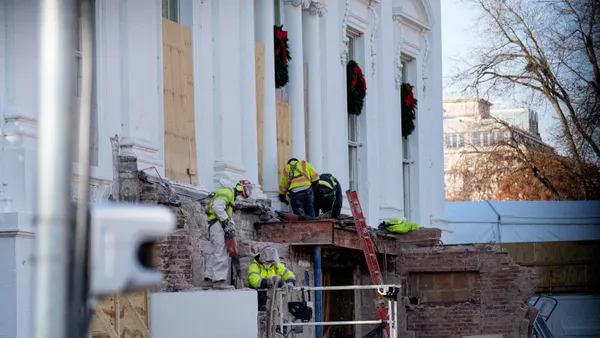Dive Brief:
- The development team that brought San Francisco the still-sinking Millennium Tower has reportedly decided to redesign the foundation of another residential high-rise currently under construction, according to The San Francisco Chronicle.
- The new design will take the foundation all the way into the underlying bedrock, unlike the Millennium Tower, which rests on a concrete slab supported by 60-foot to 80-foot piles that are too short to reach the substratum.
- In the wake of Millennium Partners' new foundation plan, city officials said this "calls into question" the seismic resilience of all the other city buildings that are not anchored to bedrock.
Dive Insight:
At one point, Millennium Partners tried to argue that its 58-story, luxury Millennium Tower was sinking and leaning more than expected because of dewatering from the construction of a city transit hub next door. However, transit officials countered that the tower was actually sinking because its piles were about 100 feet short of hitting bedrock. Despite widespread acknowledgment that the building had begun to shift, it took a citizen call to the 311 government hotline for the building department to take action. The building department had said it couldn't do anything about the building prior to the 311 call because it had been permitted properly, built to code and passed inspection.
Because of the Millennium Tower situation, San Francisco Mayor Ed Lee has called on building officials to tighten up regulations, institute independent reviews of structures and revise the city's 30-year earthquake plan to make sure these types of buildings are safe.
According to experts, devastating earthquakes around the world and in the U.S. have been the catalyst for constant reevaluations of seismic codes, particularly on the West Coast of the U.S. where the threat is greatest. With the exception of critical medical facilities and a retrofit program in Los Angeles, California has no mandatory seismic upgrade program. One of the deterrents is the expense. According to Anton Greenville, senior vice president of Balfour Beatty Construction, retrofits are "challenging to the budgets because the seismic work really eats up a large amount of the cost of construction." Without the fallback of a solid retrofit program, it's even more vital that new construction be sufficiently designed to withstand earthquakes.













